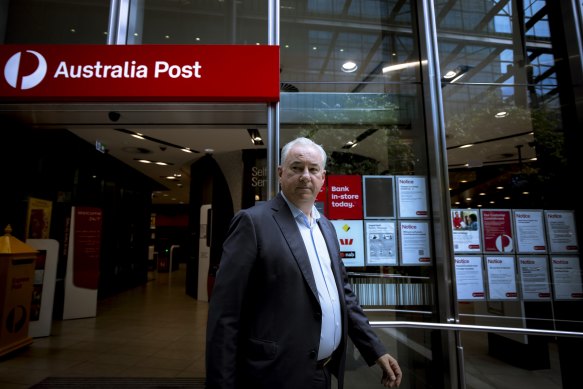On borrowed time: Letters are a luxury Australia Post can’t afford
There is an inherent contradiction enshrined in the rules that govern Australia Post. It is set up as a commercial enterprise, so it’s meant to make money and fund itself, but legislated controls on its service and stamp prices condemn it to perpetual losses.
If Australia Post was a normal business, it would be on borrowed time. As its latest numbers show, the business needs to be either hauled into this decade or rebadged as an organisation with a social charter. A charter that recognises that it will ultimately require government funding to stay afloat, rather than a company that generates dividends for its only shareholder, the government.

Its profit in the half year to December fell 88 per cent and just managed to stay in the black. But management has already flagged that its full-year profit will be in the red.
The chief culprit is Australia Post’s letter division. In the half year period to December, letters generated $882 million in revenue but posted (excuse the pun) a loss of circa $190 million.
This decline isn’t the least bit surprising, the writing has been on the wall for the letters division ever since the advent of digital mail. The business of sending letters was disrupted by technology in the same way cars made the horse and buggy redundant.
Insistence by a conga line of governments that stamp prices stay low, and mail deliveries remain at five days a week has further hamstrung the business. These demands have effectively consigned Australia Post to the same fate as Kodak, which retained thousands of retail outlets for people to develop their film even as the world moved on to digital photography.
A truly commercial enterprise could never work with these limitations.
On average Australians are now receiving a little more than a letter a week – and even that number would disappear if it wasn’t for government regulations that require certain communications to be sent by post.
In the December half, election mail outs, mandated postal notification from banks of interest rate increases and alerts of cyberattacks boosted letters revenue. But most Australians would, for example, have already received email or app notifications from their banks and digital updates from the likes of Optus and Medibank around leaked data.
Attention to Australia Post’s longer term structural issues were diverted over the past few years – firstly by COVID and then by the sensational governance snafus that resulted in the departure of its chief executive Christine Holgate over the bizarre Cartier executive gift affair.
During COVID, Australia Post was able to shrink its daily postal delivery rules to every second day for nine months. At the same time its parcel delivery business became more profitable as consumers embraced online shopping. However, even the growth in the parcel business is starting to moderate.
The healthy part of Australia Post’s business, parcel delivery, operates in the real commercial world and with that comes intense competition and the need to invest in technology and distribution. And its competitors don’t have to contend with the financial albatross of a letters division.
Australia Post has been investing in its parcels’ division to improve service and cut costs, but the improvements won’t be enough to offset the financial hit from the declining letter revenues.

Indeed, the cost of delivering daily mail only increases each year as 200,000 households are created.
The management team led by Paul Graham has made its position clear to the government and unions – the latter seems more concerned about last year’s executive bonuses. No company likes to talk about job losses but reducing the frequency of mail deliveries will inevitably lead to that – whether they are Australia Post staff or subcontractors.
But as Graham puts it, “we are at a crossroads and the headwinds facing our business have never been stronger.”“Our Letters business continues to decline, as volumes fall and costs increase. Changing customer behaviours are also impacting our retail network, with continuing digitisation resulting in declining retail transactions at Post Offices.”
A pretty grim assessment that doesn’t exactly paint a picture of commercial sustainability.
Most Viewed in Business
Source: Thanks smh.com